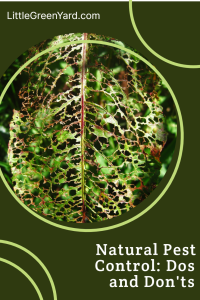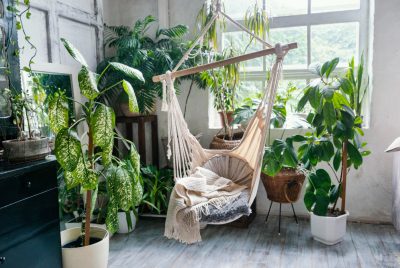Natural Pest Control: Dos and Don’ts
As a fervent indoor plant enthusiast, I understand the joy that comes with cultivating a thriving green oasis indoors. However, the persistent battle against pests can sometimes be disheartening. In this guide, we’ll explore the dos and don’ts of natural pest control for your indoor plants, offering valuable insights to keep your leafy companions healthy and vibrant.
Top 10 pests in any indoor garden
In the pursuit of maintaining a pest-free haven for your indoor plants, embracing natural solutions is not only effective but also gratifying. By understanding the perplexity of pest issues and adopting bursty yet sustainable methods, you can foster a healthy environment where your leafy companions flourish.
Here are the top 10 small insect pests in your indoor garden. You might have already experienced some of these:
Dos: Nature’s Arsenal Against Pests
1. Neem Oil: A Versatile Defender
One of nature’s most powerful allies in pest control is neem oil. Extracted from the seeds of the neem tree, this organic solution disrupts the life cycle of pests, preventing them from proliferating. Ensure that you are using high-quality, cold-pressed neem oil. These retain most of its beneficial properties and is safer for your house plants. A diluted neem oil spray is effective against a variety of pests, including aphids and spider mites. Mix the neem oil with water according to the instructions on the product label. Typically, a ratio of 1 to 2 tablespoons of neem oil per gallon of water is sufficient.
2. Garlic and Pepper Spray: Homemade Defense
Create a DIY pest repellent by combining 2 cloves of garlic (crushed), 1 tablespoon of crushed red pepper flakes, 1 teaspoon of liquid dish soap and 2 cups of water. Blend these kitchen staples together, and strain the mixture with a fine mesh strainer or cheesecloth, then transfer the mixture into a spray bottle and use it on your plants. The pungent odor deters pests without harming your indoor oasis. It’s a simple, cost-effective solution straight from your pantry. It’s a natural and budget-friendly alternative to commercial pesticides, promoting a healthy and thriving indoor garden.
For those of you who are suspicious if this natural pesticide works, check out this useful video I found on YouTube:
3. Nematodes: Tiny Warriors Below the Surface
While nematodes are often associated with outdoor pest control, they can also play a role indoors. These microscopic organisms prey on soil-dwelling pests such as fungus gnat, making them an excellent addition to your natural pest control strategy. Ensure you choose the right nematode species for indoor use. Buy nematodes from a reputable supplier to ensure their viability and effectiveness. Follow the instructions provided with the nematodes for the correct mixing ratio. Typically, nematodes are mixed with water before application. Use a watering can or sprayer to distribute the nematode solution evenly on the soil. Make sure to keep the soil moist for the nematodes to establish themselves, and be patience as it might take some time for nematodes to establish and deter pests.
The nematodes are stored in conditions during which they go into cryptobiosis – they suspend life when conditions are unfavorable – and then continue on life as normal when conditions improve!
Don’ts: Pitfalls to Avoid in Natural Pest Control
1. Overusing Oils
While neem oil is a potent ally, using it excessively can harm your plants. Over-application may lead to clogged pores, hindering the plant’s ability to breathe. Follow the recommended dilution ratios and application frequency to maintain a healthy balance.
2. Ignoring Plant Diversity
Monoculture, or having a large number of the same plant, can attract specific pests. Embrace diversity in your indoor garden to reduce the risk of a pest infestation targeting a particular plant species. A varied plant collection creates a more resilient and balanced ecosystem.
3. Late-Night Watering
Watering your plants in the evening may create a damp environment that attracts pests. Opt for morning watering to allow the soil to dry throughout the day, reducing the risk of fungal growth and pest infestations.
4. Ignoring Signs of Stress
Healthy plants are more resistant to pests. Regularly check for signs of stress, such as wilting or discoloration, and address underlying issues promptly. A thriving plant is better equipped to fend off potential invaders.
5. Using Harmful Chemicals
Avoid the temptation to resort to chemical pesticides. While they may provide a quick fix, they often disrupt the natural balance of your indoor garden, harming beneficial insects and potentially causing long-term damage to your plants.
6. Managing Root Knot Nematodes
Here’s an organic approach to managing root knot nematodes. Normally every summer I solarize my garden beds. You can also switch to a cover crop method to both actively and passively get rid of root knot nematodes.
FAQs:
- Can I use multiple natural pest control methods simultaneously?
- Yes, but it’s crucial to follow recommended guidelines for each method. Combining them wisely can enhance their effectiveness.
- How often should I inspect my indoor plants for pests?
- Regular inspections, at least once a week, help identify and address pest issues early, preventing widespread infestations.
- Are nematodes safe for all types of indoor plants?
- Nematodes are generally safe, but it’s essential to research specific compatibility with your plant species before application.
- Can I use natural pest control methods for edible indoor plants?
- Absolutely. In fact, using natural methods ensures that your edibles remain free from harmful residues.
- Should I continue natural pest control methods during the dormant season?
- While pests may be less active during the dormant season, maintaining a preventive approach is advisable to avoid potential issues when they become active again.





